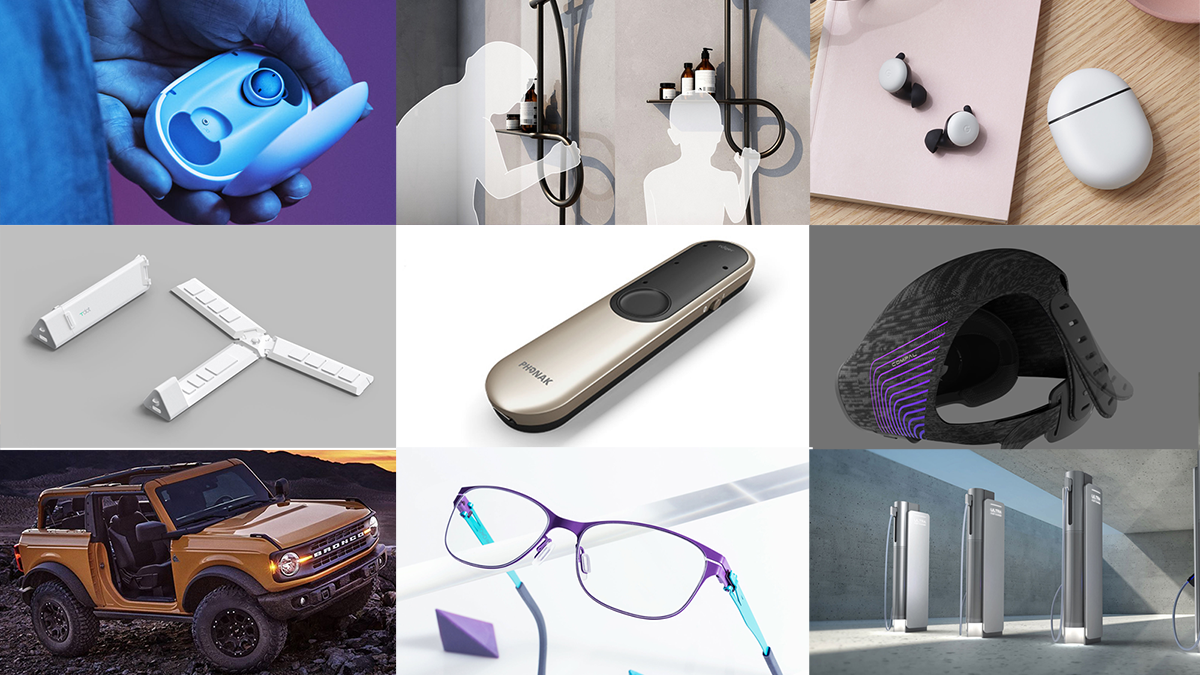
Sarah Fonder|Essays
August 4, 2021
Accessibility and Innovation at iF Design
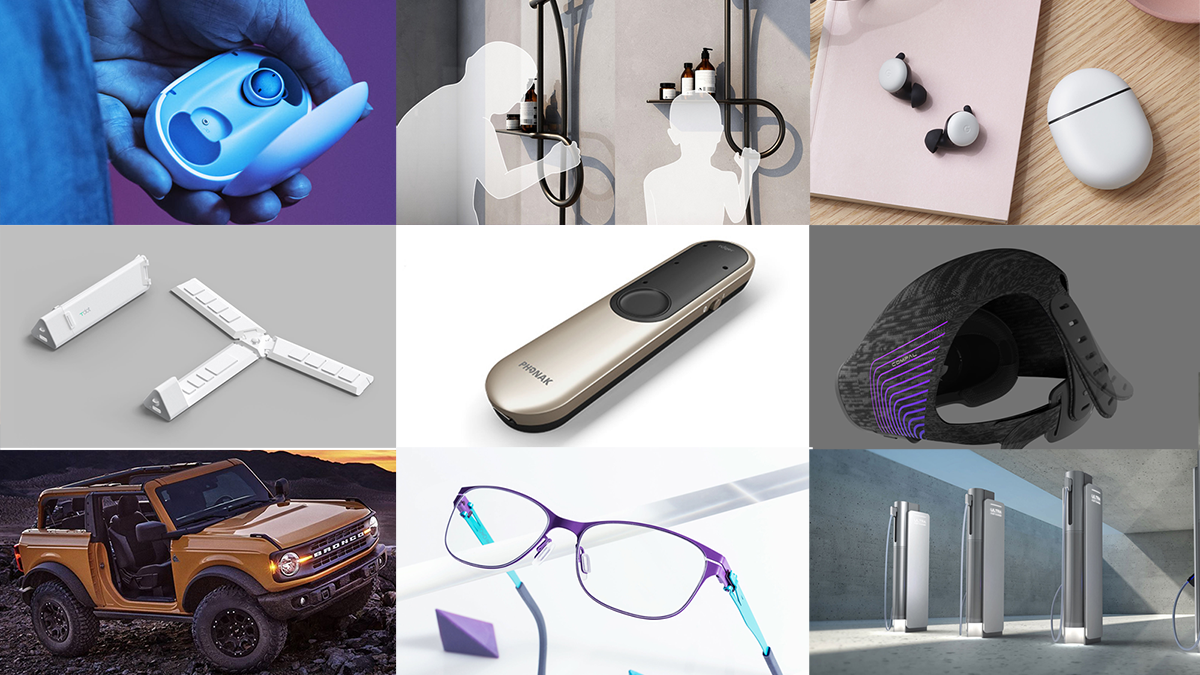
Editor’s Note: This post is brought to you by iF Design Award. For more information about the projects and to learn about the awards program, click here.
Harvard Advanced Leadership Fellow Karen Korellis Reuther believes the design world’s increased focus on accessibility is inspiring the world’s most exciting innovations. “Probably 95% of the time, you’re designing for cases [where you] aren’t the target consumer,” she said. “When you focus on unique use case, it oftentimes results in a product that’s better for everybody.”
As an experienced creative and activist raising visibility around equity in the workplace, and with a specific focus on gender equity in design, Reuther has an especially keen eye for inclusive design. This category of aesthetics often focuses on making sure products work for as many people as possible, and not just a select few. “Inclusive design is an approach that begins with a specific use case, many times outside the ‘norm’,” Reuther elaborated. “Focusing on this use case more often than not results in a product that is more usable for a much broader cross-section of the population.”
After 40 years working in primarily male-dominated companies, it became clear to Reuther that a homogenous team is often limited by perspective.
“It’s very challenging to be the only [representative of a particular group] in a room,” she said. “The chances that someone is going to see the world or see the opportunity in the same way that you see it is…less and less.” In Reuther’s eyes, a room of creatives with diverse backgrounds opens up important questions about the efficacy of a product.
Her passion for groundbreaking design and experience at companies like Nike and Reebok makes Reuther a sought-after authority on today’s innovations. 2021 is her third year as a judge for the Product Design category of the iF Design Award, where she and a team of fellow design experts combed through thousands of entries to find the best products on the modern market. With Reuther’s passion and commitment to inclusive design and innovation, we asked for her take on the most progressive entries of the past year.
“I looked under the criteria of gender, or body type…age or ability, ease of use and safety,” Reuther elaborated. “I’ve [also] really come to love [the] idea of dignified assistance, [products that] give somebody a helping hand while still being dignified [as well as] wearability and portability.”
Her favorite designs are ultimately unified by a healthy sense of empathy and curiosity. “Any designer has to be…a committed and curious observer…because if you ask somebody what they want, they’re not going to tell you,” she said. “I always think designers need to be part anthropologists…really understanding the science of the way people tick, the way people move, what people are doing in their day to day, and that really can only be done through observation.”
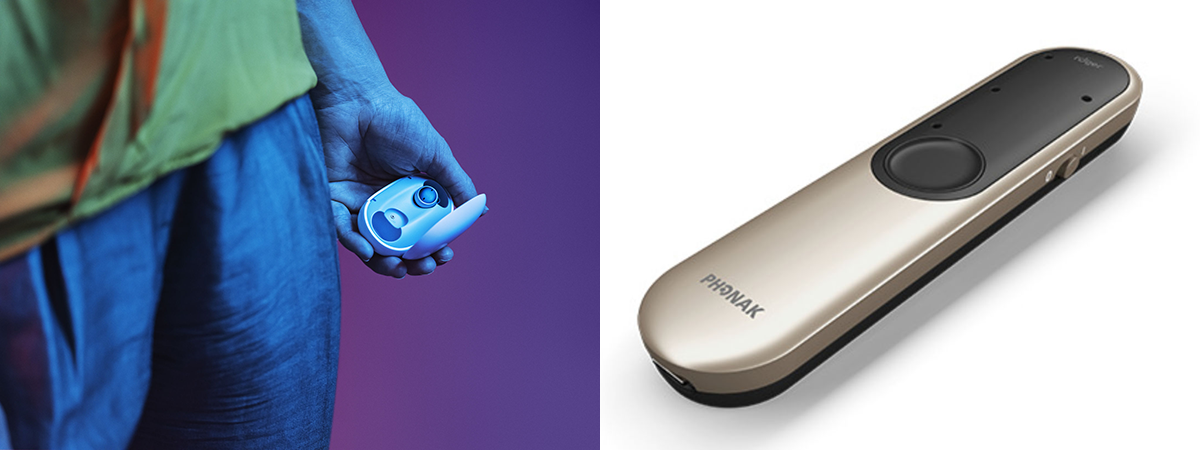
1-2. Signia Active Pro + Phonak Roger On hearing aids
As someone with partial hearing loss, Reuther’s appreciation of a well-designed hearing aid is personal. “I have hearing loss in a certain frequency that, at some point about a year and a half ago, went from an occasional nuisance to ongoing frustration, so I needed to do something about it,” she said. “So the two hearing aid products were really near and dear to my heart.”
The Signia Active Pro features a sleek, modern design reminiscent of Airpods. This product made Reuther excited about hearing aids’ potential as a fashion statement. “There’s no reason to hide them anymore…or feel embarrassed,” she said. “I think…hearing aids [are] getting more and more popular [because of] a demographic who is ready and willing for something like this, and I think it’s boundary-breaking. I think pretty soon they’ll be like glasses.” The product’s sweatproof design also makes it possible to work out or participate in sports whilst wearing.
Her other pick, the Phonak Roger On wireless microphone, functions more like a speaker that a user can wear or carry between rooms. Reuther praised this product for being well-designed, easy to use, and versatile. “A teacher can wear it around the lanyard on their neck, or as a lapel clipping on like a speaker, and then whoever’s in the audience with that hearing aid can hear better. [I’m interested in] anti-stigmatizing places where we need a dignified assist.”
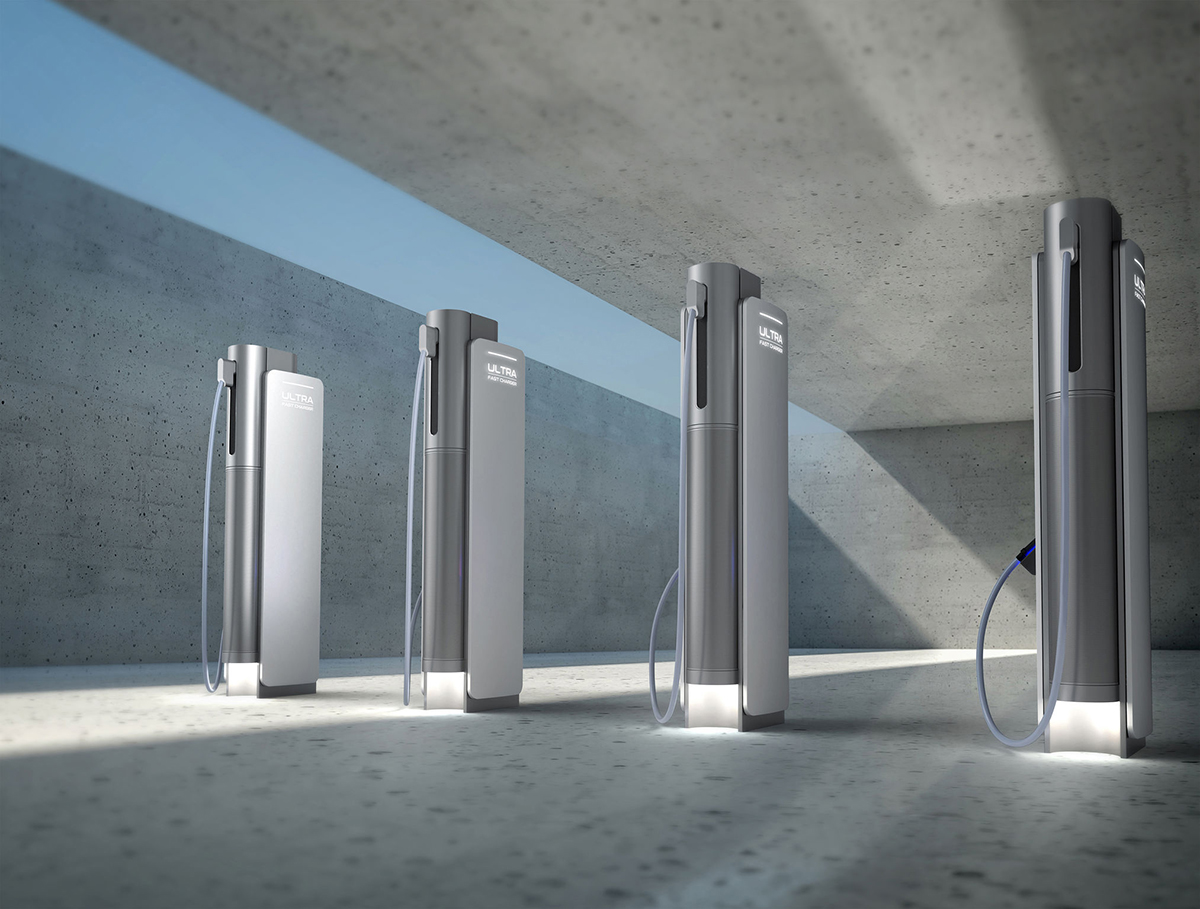
While the jury looked at several car charging stations, the E-PIT Ultra-Fast Charger’s focus on accessibility and safety is what ultimately set it apart from competitors. Various features of this well-lit, uncomplicated station implied careful attention to bodies across the spectrum of gender, ability and age. Finally its design was honored with an iF gold award.
“It spoke to things that were probably more important to women and maybe older people who aren’t as comfortable with getting out of the car, especially at night,” Reuther said. “They address the different sizes, height, [and] strength of people, [and] provided lighting that gave a really safe and secure atmosphere…You pull up, the machine is well lit, it’s very easy to use, [and features] clear instructions.”
The station is also easy for workers and users to clean, which Reuther found to be a crucial safety consideration in the era of COVID. “[It’s] really easy to clean, for the people that are maintaining that area,” Reuther said. “I think the pandemic has given us an amplified sense of the importance of this.”

Reuther loved the latest version of the Ford Bronco for its sturdy, yet lightweight design that’s easy to operate. She could tell the design team “really focused on the female consumer…and a younger demographic.”
The gold-awarded Bronco’s redesign is perfect for outdoor lovers who may have previously felt intimidated by off-roading vehicles. “The idea of the Bronco is to be able to open the roof and take off the doors, which can be very, very difficult and unwieldy,” Reuther explained. “So [it’s important] to make sure that a woman…or someone [of a] smaller stature could take off those doors, and have a place to store the doors within the vehicle…I just think that idea of inclusivity really resulted in [a more accessible] adventure vehicle. It does what’s promised, and you don’t have to be this strong and be able to lift this much weight and have a private garage to store the doors when you’re out and about…It’s fun…and not macho…and being a part of that enjoyment is very inclusive.”
![]()
Google designed their latest earbuds with the understanding that ears come in unique shapes and sizes. While most popular earbuds are too large for some ears, the Pixel Buds’ simple design is easy for any user to shape to their liking. “The way they fit into the ear feels natural and comfortable,” Reuther said.
She was especially excited by the product’s connection to Google Translate. This exceptional feature makes it easy for any user to understand someone speaking in a foreign language. “I just think it opens the world,” Reuther continued. “It crosses thresholds and boundaries that we may have culturally with each other into that mode of understanding.”
This clever, tech-savvy upgrade of wireless headphones also comes in a variety of colors including white, black, blue, and orange.

6. Cross Multi-Purpose Shower Bar
While the Americans with Disabilities Act made bathrooms around the country much more accessible, there hasn’t been much innovation in the look of aids like handlebars. Their overly standardized look can often make an inclusive bathroom look cold or sterile. Reuther’s interest in improving the designs of these spaces made her especially excited about this versatile shower bar. She loves the playful, hose-inspired look, and its ergonomic design makes it easy for children and seniors to use.
“I just felt that this was a great example of where inclusive design doesn’t need to cost anything more,” Reuther said. “I would want this even if it didn’t give me all those options. Who doesn’t, every once in a while, need to hold on to something or say, ‘I wish that that shampoo bottle was somewhere where I could reach it?’”
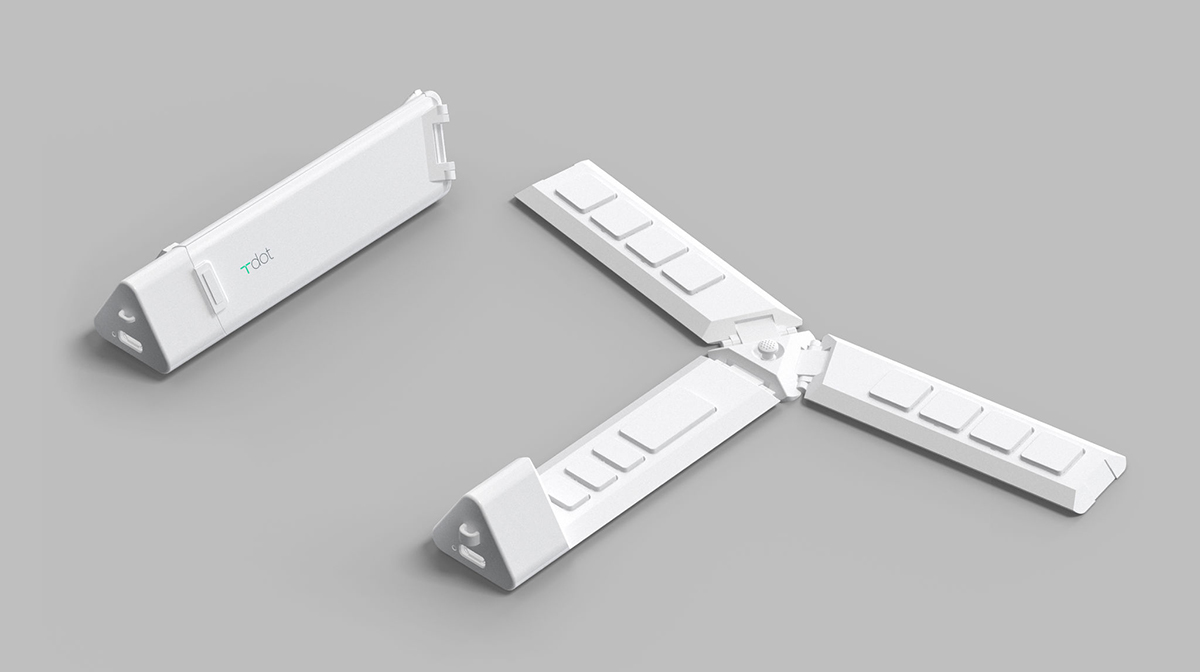
In the Tdot, Reuther saw a welcome change from the typically heavy, complicated setup of a typical Braille keyboard, which the jury also rated gold.
“I just thought this was so amazing that [the Tdot] was this lighter weight Braille keyboard that could hang on a lanyard around your neck so you always had it,” she said. “It brings a new level of accessibility and portabiity to the design of a Braille keyboard.”
Reuther saw the keyboard’s versatile colorways as a clear mark of a design team considering the needs of their target audience. “Somebody could easily cut that and say, ‘Listen, the person that’s using it and buying it doesn’t care about color,’” Reuther said, “but by designing with colorway options it gives the person who’s using it the opportunity to reflect and share their personality with sighted persons through the color of their keyboard. Tdot has made an innovative and gamechanging product personal too.”

8. OVVO Optics Junior Collection
These fun, colorful glasses for kids caught Reuther’s eye for their customizable design. She loved that these sturdy pieces made it easy for a child to express their creativity and sense of style.
“These were so respectful, [but] they were still fun,” Reuther said, “and they use the best materials, like titanium and surgical steel. And they were built to be really lightweight and, and fit to the size of the child’s head, but also with this sort of mix and match approach that they could pick.”
All OVVO glasses are custom made to a child’s individual specifications. They’re also hypoallergenic and virtually indestructible to suit active lifestyles. “It just felt like you know, these were real glasses for real people, and I really love that,” Reuther continued. “You have to think about these kids are wearing these glasses every day, all day.”
Observed
View all
Observed
By Sarah Fonder
Recent Posts
Runway modeler: Airport architect Sameedha Mahajan on sending ever-more people skyward The New Era of Design Leadership with Tony Bynum Head in the boughs: ‘Designed Forests’ author Dan Handel on the interspecies influences that shape our thickety relationship with nature A Mastercard for Pigs? How Digital Infrastructure is Transforming Farming and Fighting Poverty



